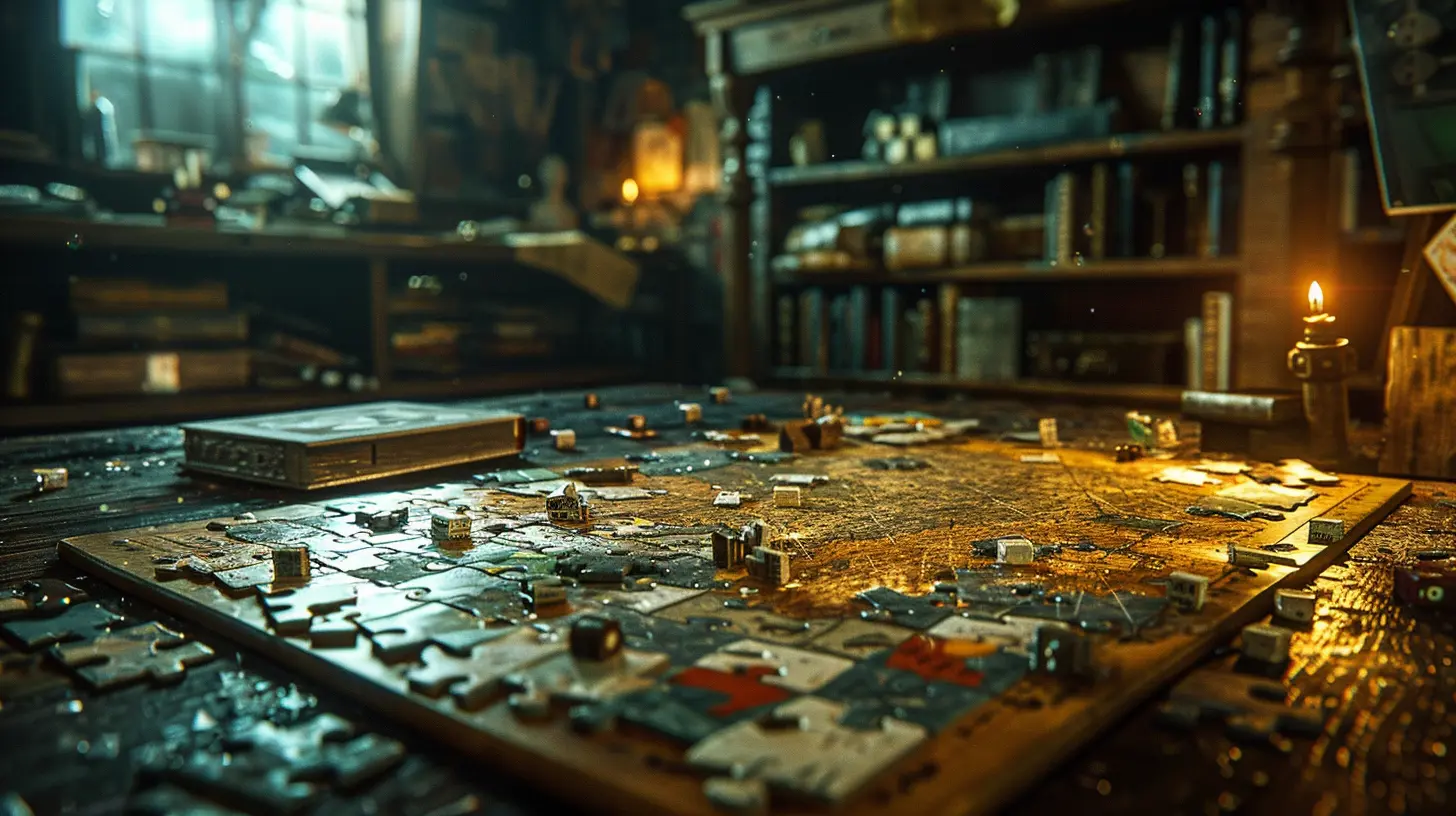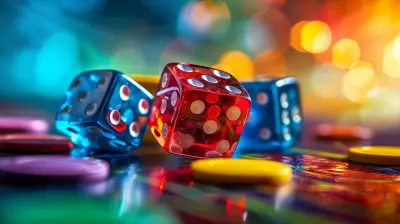Exploring the Science Behind Puzzle Game Addiction
23 July 2025
Have you ever found yourself unable to put down a puzzle game, even though you only planned on playing "for five minutes"? Suddenly, an hour has gone by, and you're still glued to your screen, trying to crack that next level. If this sounds familiar, you're not alone. Puzzle games—be it Candy Crush, Sudoku, crosswords, or even Tetris—have this uncanny ability to suck us in. But why? What is it about these seemingly simple games that keep us coming back for more?
Let’s dive into the fascinating science behind puzzle game addiction and figure out what hooks us so effectively. Warning: After reading this, you might feel like playing a puzzle game. (See what I did there?)
The Perfect Balance of Challenge and Reward
Ever heard of the term “the sweet spot”? Puzzle games thrive on this concept. They strike the perfect balance between being challenging enough to engage you but not so difficult that you want to throw your phone across the room. This sweet spot keeps your brain on high alert, constantly working to solve the next problem while dangling just enough reward to keep you motivated.Think about it: What happens every time you complete a level or solve a problem? You get a flood of satisfaction, right? That’s dopamine at work—your brain’s way of saying, “Good job! Keep going!” Puzzle games are like dopamine slot machines, giving you little hits of pleasure to keep you hooked.
The Role of Dopamine (aka Your Brain's "Feel-Good" Drug)
Let’s talk about dopamine for a second. It’s a neurotransmitter in your brain that plays a major role in how you experience pleasure. Every time you achieve a small goal in a puzzle game—say, clearing lines in Tetris or completing a difficult Sudoku puzzle—your brain releases a burst of dopamine. It’s like a tiny party in your head.This reward system is designed to keep you motivated, but in puzzle games, it becomes a loop. Solve a problem, feel good, repeat. The more you play, the more your brain craves that next little victory. It’s almost like your brain is giving you a high-five every time you succeed, and who doesn’t love a high-five?
Why Your Brain Loves to Solve Problems
Humans are wired to solve problems—call it evolution’s gift. Back in the day, our ancestors needed problem-solving skills to hunt for food, build shelter, and survive predators. While we don’t have to solve life-or-death issues on a daily basis anymore (thank goodness), our brains haven’t let go of their love for puzzles. They see every little challenge as an opportunity to prove their worth.Puzzle games tap right into this instinct. They give your brain a series of structured problems to solve, which feels oddly satisfying. Plus, there’s no real stress involved. If you mess up in a game, you just try again. It’s like your brain gets to flex its muscles without the risk of failure.
The Satisfaction of Closure (or Why You Can’t Stop Until You Finish)
Ever noticed how you feel incomplete if you leave a puzzle game halfway through? That’s because your brain hates loose ends. Psychologists call this the "Zeigarnik Effect," which basically means you’re more likely to remember unfinished tasks than completed ones. Puzzle games are a playground for this concept.When you start a level and don’t finish it, your brain keeps nudging you, saying, “Hey, we’re not done here!” This is why it’s almost impossible to walk away from a game when you’re stuck—you feel the need to finish what you started, no matter how long it takes.
The Allure of Random Rewards (Hello, Loot Boxes)
Another sneaky trick puzzle games use? Random rewards. You know those moments when you score a surprise bonus or unlock extra moves? They’re not accidental. Game designers use random rewards to activate your brain’s reward system even more.This concept comes from something called “variable ratio reinforcement,” which is also what makes slot machines so addictive. When rewards are unpredictable, your brain gets even more excited because it can’t anticipate when the next prize is coming. Puzzle games are essentially conditioning you to keep playing "just one more level" because you never know what surprise might pop up.
The Social Factor: Competing (and Bragging) Feeds the Obsession
Let’s be honest—part of the fun of puzzle games is showing off. Whether it’s beating your friend’s high score or sharing your progress on social media, the competitive aspect adds another layer of addiction.Our brains are social creatures. We thrive on approval and recognition, and puzzle games offer endless opportunities for that. When you share a screenshot of your latest victory or climb the leaderboard, it feels good, doesn’t it? That’s because your brain sees it as validation—it’s a way of saying, “Look at me, I’m crushing it!” Who doesn’t want to feel like a rockstar?
The Zen-Like State of Flow
Ever heard of “flow state”? It’s that magical feeling when you’re so absorbed in what you’re doing that you lose track of time. Puzzle games are ridiculously good at getting you into this state. They’re like a mental escape pod, taking you away from the stresses of everyday life and into a world where the only thing that matters is matching tiles, forming words, or cracking codes.Flow happens when you’re fully immersed in a task that’s just challenging enough to keep you engaged but not so hard that it frustrates you. Puzzle games are like flow machines—they’re perfectly designed to get you in the zone and keep you there.
Accessibility: Puzzle Games Are for Everyone
Another reason puzzle games are so addictive? They’re insanely accessible. You don’t need to be a hardcore gamer or invest hours of your day to enjoy them. They’re easy to pick up and play, whether you’re waiting for the bus, standing in line, or just chilling on the couch.Plus, they cater to all skill levels. Whether you’re a newbie or a seasoned pro, there’s a puzzle game out there for you. The simplicity and universal appeal make it easy for anyone to get hooked.
Are Puzzle Games Really That Bad for You?
Okay, so we know puzzle games are addictive, but are they really a bad thing? Surprisingly, no. In fact, playing puzzle games has some pretty awesome benefits. They help improve cognitive skills like memory, problem-solving, and spatial reasoning. Plus, they’re a great way to relax and unwind.That said, like anything, moderation is key. If you find yourself spending hours on end playing Candy Crush instead of, you know, living your life, it might be time to take a step back. But as long as you strike a balance, there’s no harm in indulging in a little puzzle gaming now and then.
Conclusion: Why We Keep Coming Back for More
So, what’s the verdict? Puzzle games are addictive because they’re designed to be. They tap into our brain’s natural instincts, reward systems, and love for problem-solving, all while keeping things fun and low-pressure. Throw in some random rewards, social competition, and the occasional dopamine hit, and you’ve got a recipe for a game you just can’t put down.But hey, if playing puzzle games makes you happy and gives your brain a good workout, why fight it? Just remember to take a break now and then, okay? Now if you’ll excuse me, I’ve got a Sudoku puzzle calling my name.
all images in this post were generated using AI tools
Category:
Puzzle GamesAuthor:

Lana Johnson
Discussion
rate this article
1 comments
Myles McWain
In labyrinths of logic, we lose our minds, Neurons dance to the rhythm of clues— Each twist and turn, a siren’s call, Our hearts entwined, in puzzles we choose. Addiction’s art, forever ensues.
August 2, 2025 at 3:51 PM

Lana Johnson
Thank you for your poetic reflection! It beautifully captures the intertwining of logic, emotion, and the captivating allure of puzzle games.


